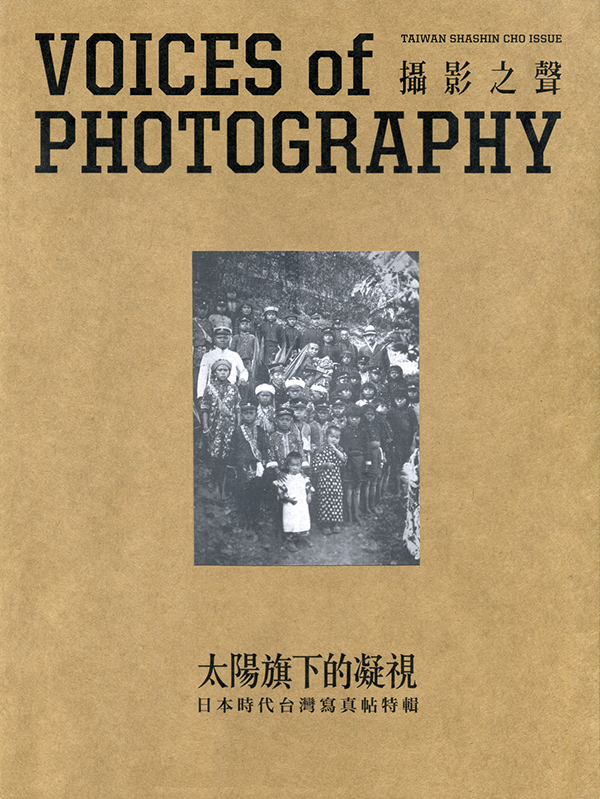在台灣的歷史影像河流裡,自1895年起歷時五十載的日本統治時期,是攝影術作為官方重要宣傳工具,進而開啟台灣本土寫真紀錄的一道高潮。其中,由日本政府機關及寫真館積極出版,用以展示台灣政經發展成果、引介島內地理風土與人種民俗的各式「寫真帖」,有如一股圖像涇流,沖刷出早期台灣的殖民社會地貌,成為帝國版的「看見台灣」。
攝影究竟創造了什麼歷史?作為攝影客體的台灣,如何被「看見」?本期特輯我們邀集攝影文史工作者簡永彬、寫真帖研究者徐佑驊與作家陳柔縉,述說日治時期台灣寫真帖的歷史成因、剖析帝國寫真裡的視覺殖民與觀看秩序,並從稀有的古早照片裡,尋找彼時台灣民間生活的痕跡。而在本期專欄中,張世倫透過日治時期的另一重要影像資料——圖像明信片——透析日本建立的帝國視野 ; 顧錚則以著名攝影家木村伊兵衛於1940年代在日本扶植的滿州國所拍攝的《王道樂土》,解剖攝影裡的觀看政治。
這期的Artist’s Showcase單元,中國當代攝影藝術家莫毅以裂解經典的文革時期照片,在人們看著歷史影像卻又看不清真相之際,進行一趟歷史記憶的拼貼探查。蕭永盛的「台灣攝影史」連載,從馬偕牧師的日記裡發掘迷上攝影的馬偕所留下的台灣身影。Q單元則專訪身兼策展、評論、出版等多重身份的黃亞紀,以及日本攝影季刊《IMA》總編輯長太田睦子,一探他們對於當代攝影的觀察。同時特別收錄阮慶岳、沈昭良、張世倫與李威儀針對台灣攝影書閱讀與出版現象的討論對話。
本期特輯從資料蒐集、撰稿到製作都十分費時費工,特別是歷經三月太陽花學運與持續進行的反核運動,我們不得不一直停下手邊的工作走上街頭,因為國家機器的愈發蠻橫,已喪失傾聽對話的胸懷,以及對台灣永續發展的遠見 ; 當掌權者僅標舉經濟數字大餅並藉此要脅人民,終將拼出一個唯利是圖、無理想靈魂的空殼社會。我們絕不接受,並有嚴正抵抗的義務及決心。
所以,親愛的讀者,未來的編輯台可能不得不移師街頭,在道路上橫擺。因為我們關心攝影,也關心鏡頭外的現實 ; 而我們不做喜鵑,也不做寒蟬。一路併肩同行的讀者們,謝謝你們的陪伴。做為一份小刊物,我們沒有豐裕的資源和能力,但我們堅守我們僅有的骨氣與良知。
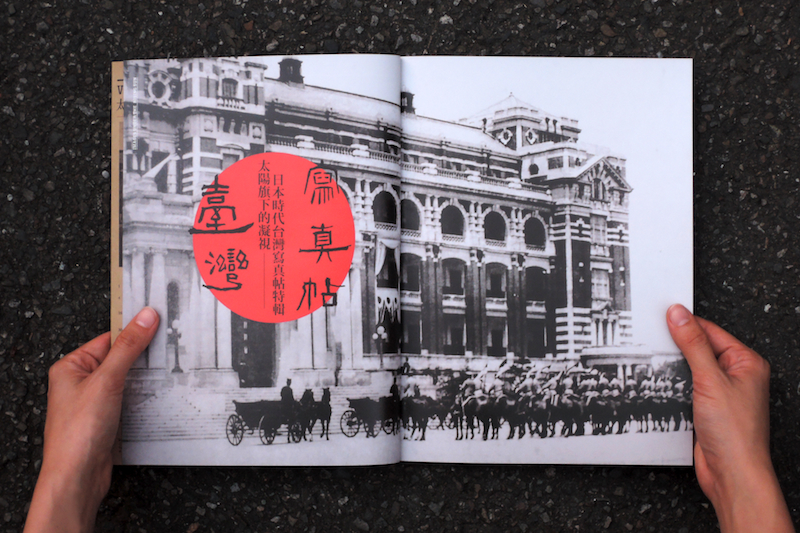
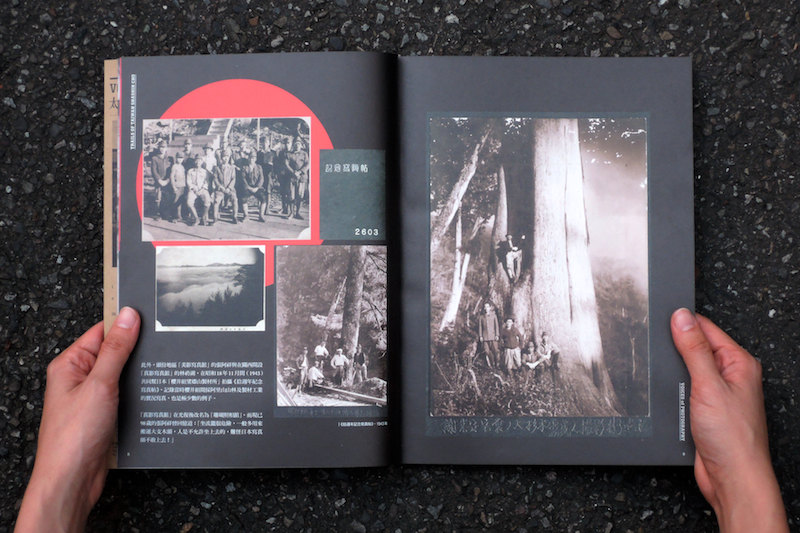
Half a decade of Japanese colonial rule since 1895 marked a peak in Taiwanese photographic history as the government used photography as an important means of propaganda. The colonial government and shashin kan (photo studios) actively published all kinds of shashin cho (photo albums), displaying the economic progress and local cultures of Taiwan. These volumes of images put together a map of the early colonial times in Taiwan through the eyes of the Nihon empire.
What history has photography created? How is Taiwan “seen” as the object of photography? In this issue, we invited photography archivist Chien Yun-Pin, shashin cho researcher Hsu You-Hua and writer Chen Rou-Jin to share with us how the shashin cho came about during the Japanese colonial times, how these volumes set forth a point of view from the colonisers, and how we can piece together life in Taiwan then through these rare photographs. Meanwhile, Chang Shih-Lun explores the point of view that Japanese imperialists had established through another important visual resource——postcards——in his column, while Gu Zheng shares his analysis about Odo Rakudo, a photo book of the Japanese supported Manchukuo by well-known photographer Ihei Kimura in the 40s, giving us an insight on the political perspective.
In “Artist’s Showcase”, contemporary Chinese photographer Mo Yi deconstructs stereotypical images from the Cultural Revolution, taking a journey into history through a blurring of what seems appears to be historical pictures. Hsiao Yong-Sheng’s “History of Photography in Taiwan” uncovers pieces of Taiwan from 1871-1901 captured by Dr Mackey in his journals. “Q” features interviews with Huang Yaji, curator, critic and publisher, and Matsuko Ota, chief editor of the quarterly Japanese photography magazine IMA, who share with us their observations on contemporary photography. This issue also crovers a special dialogue between Roan Ching-Yueh, Shen Chao-Liang, Chang Shih-Lun and Lee Wei-I on the publishing and reading of photo books in Taiwan.
Immense amounts of time and effort have been spent by the team to put together this special issue, from gathering materials, drafting of the contents to the production of the magazine itself. Amidst it all were the Sunflower Movement in March and the continual anti-nuclear protests, which we feel obliged and responsible to partake in. The state apparatus in Taiwan has lost its willingness to listen and its foresight on sustainable growth, instead becoming more and more authoritarian. When those in power put economic statistics above all else and use them to threaten their people, the eventual outcome will be a ruthlessly capitalistic society without ideals and dreams. We cannot, and will not accept such a future. We are resolute in taking on the responsibility of resisting becoming a heartless society.
Therefore, dear readers, our editorial desks may have no choice but to move to the streets in the times to come. We love photography, but we also love the world beyond the lenses. We won’t just paint rosy pictures, and we refuse to stay silent. We thank you, our readers, for being by our side. As a humble magazine, VOP does not have abundant resources or power, but we will stand firm, resolute and true to our conscience and beliefs.
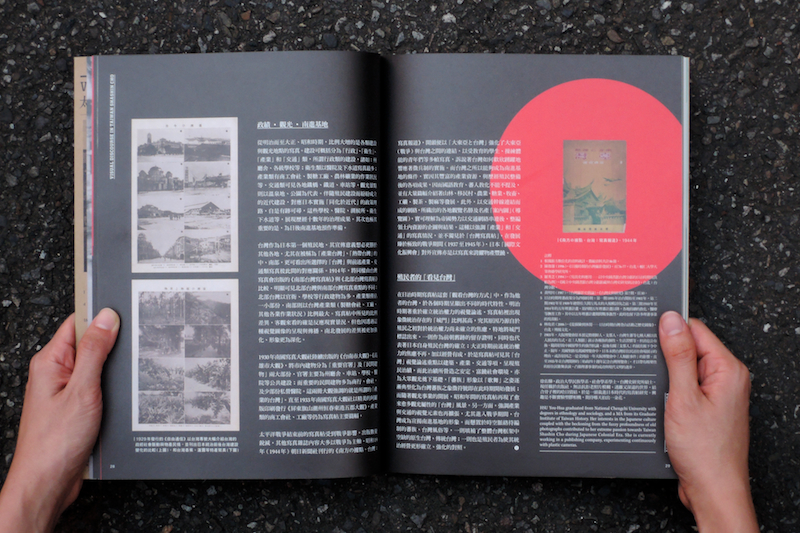
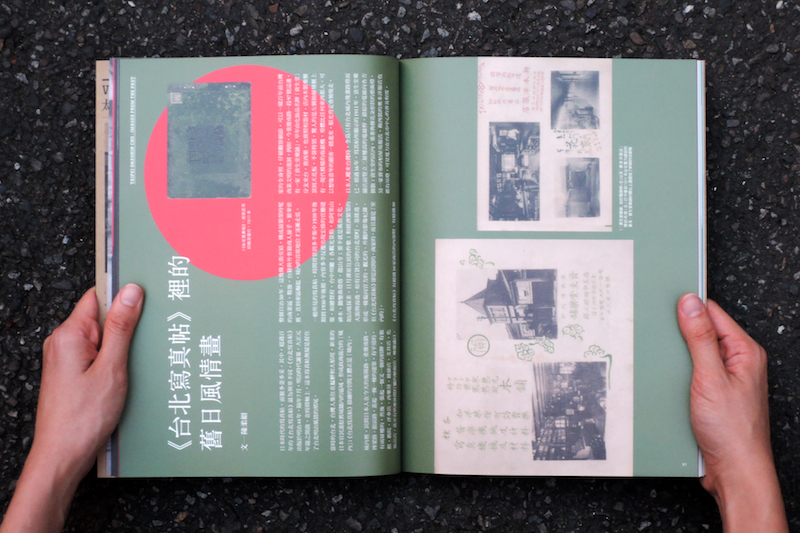
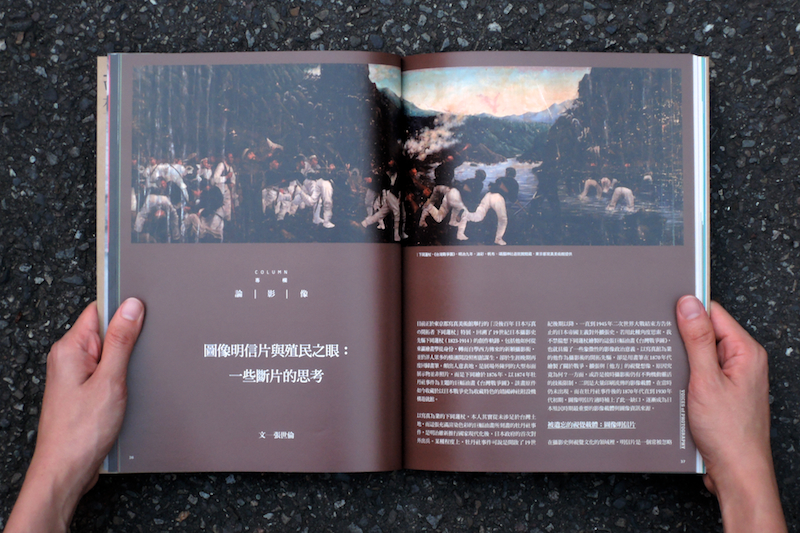
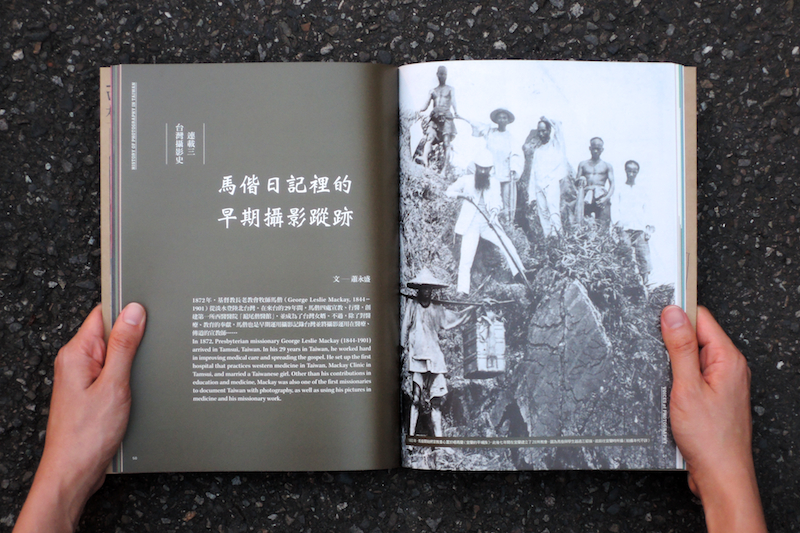
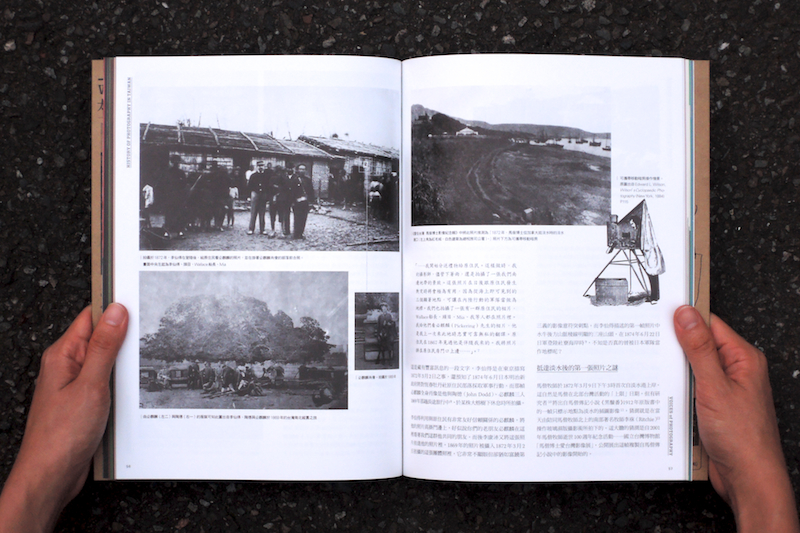
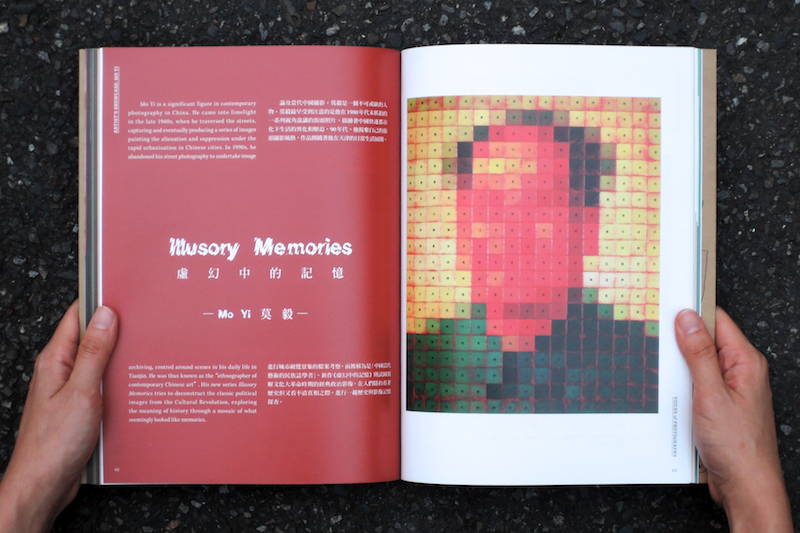
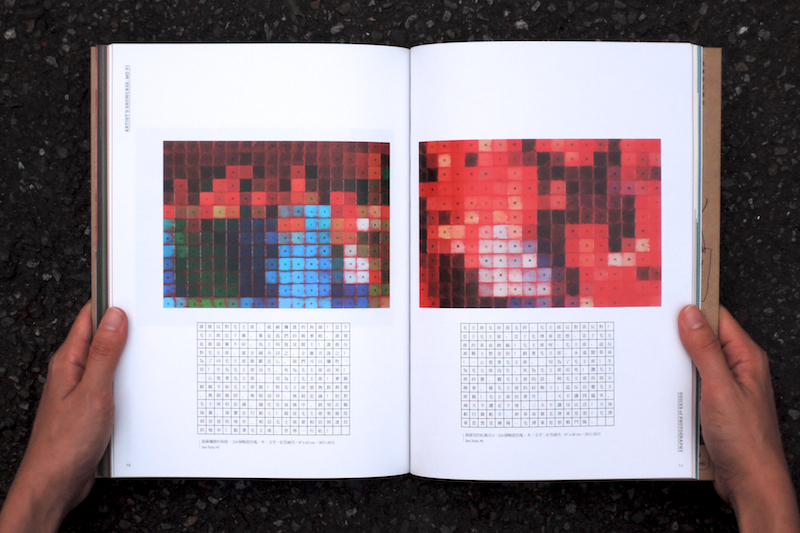
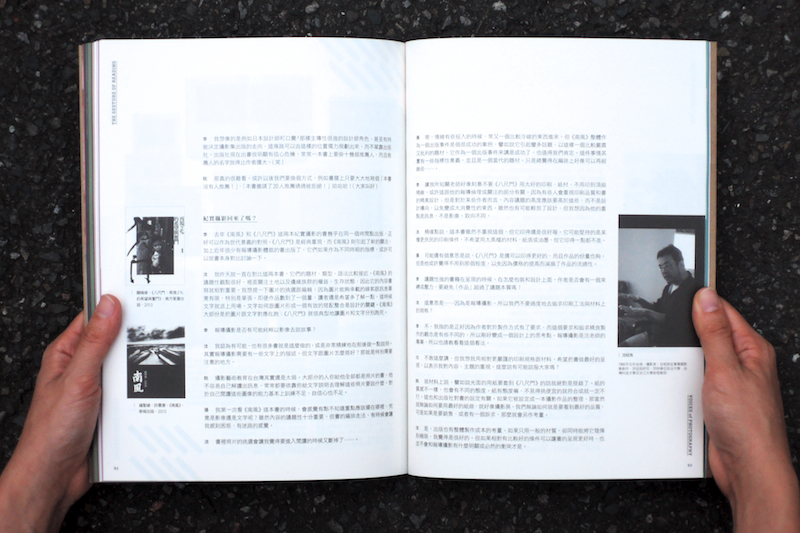
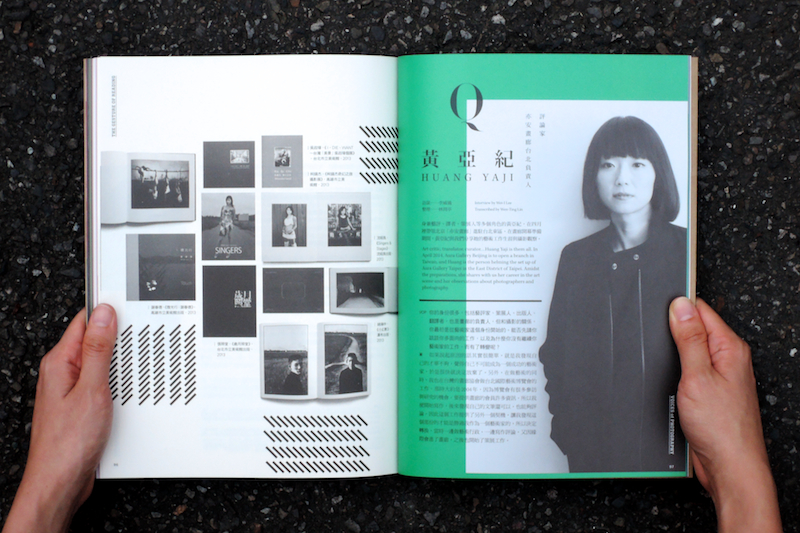
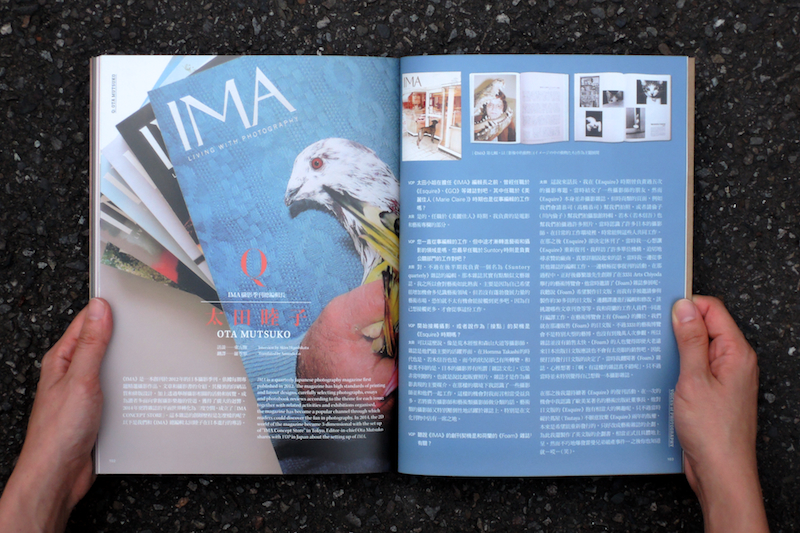
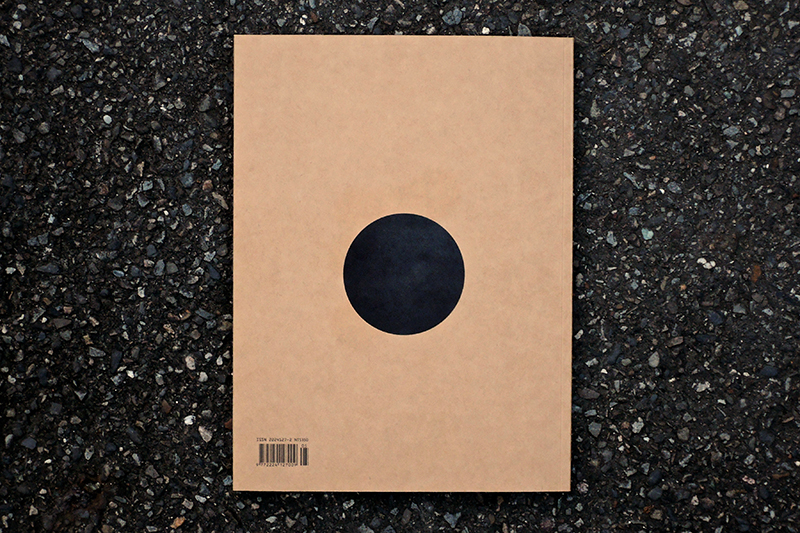
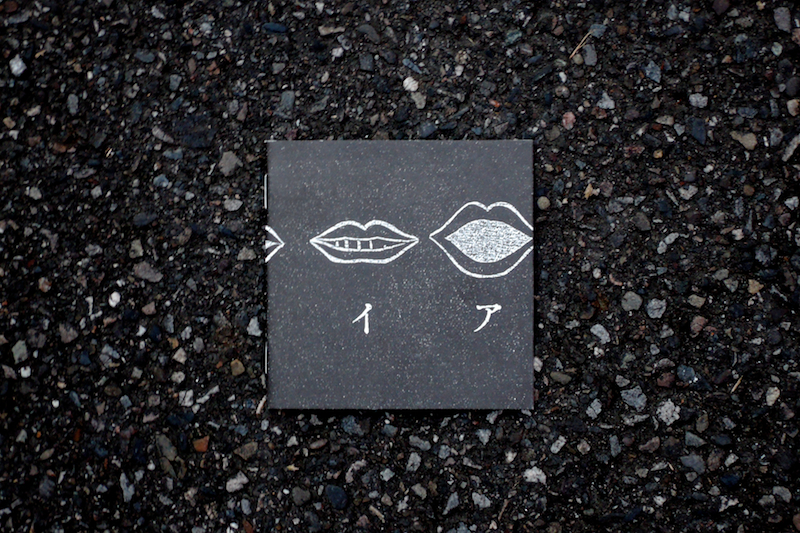
本期目錄 Contents
● 台灣寫真帖的軌輯
Trails of Taiwan Shashin Cho
文|簡永彬 Text by Chien Yun-Pin
● 台灣寫真帖中的台灣視覺論述
Visual Discourse in Taiwan Shashin Cho
文|徐佑驊 Text by Hsu You-Hua
● 《台北寫真帖》裡的舊日風情畫
Taipei Shashin Cho: Images from the Past
文|陳柔縉 Text by Chen Rou-Jin
● 論影像 On Images
圖像明信片與殖民之眼:一些斷片的思考
文|張世倫 Text by Chang Shih-Lun
● 雙月書記 Book Review
木村伊兵衛圖繪的「王道樂土」
文|顧錚 Text by Gu Zheng
● 台灣攝影史 History of Photography in Taiwan|連載三
馬偕日記裡的早期攝影蹤跡
文|蕭永盛 Text by Hsiao Yong-Seng
Artist’s Showcase
虛幻的風景 Illusory Memories
莫毅 Mo Yi
訪談|石塚洋介 Interview by Ishizuka Yosuke
● 閱讀的姿勢:台灣攝影書出版對話
The Gesture of Reading: Dialogue on Publishing Photography in Taiwan
阮慶岳+沈昭良+張世倫+李威儀
Roan Ching-Yueh / Shen Chao-Liang / Chang Shih-Lun / Lee Wei-I
Q
評論家、亦安畫廊台北負責人 黃亞紀 Huang Yaji
訪談|李威儀 Interview by Lee Wei-I
《IMA》攝影季刊總編輯長 太田睦子 Ota Mutsuko
訪談|東方輝 Interview by Akira Higashikata
Photobook
天皇的肖像
文|梁秋虹 Text by Liang Chiu-Hung
Exhibitions
在魔術與皮膜底下
文|錢怡安 Text by Lili Chien

